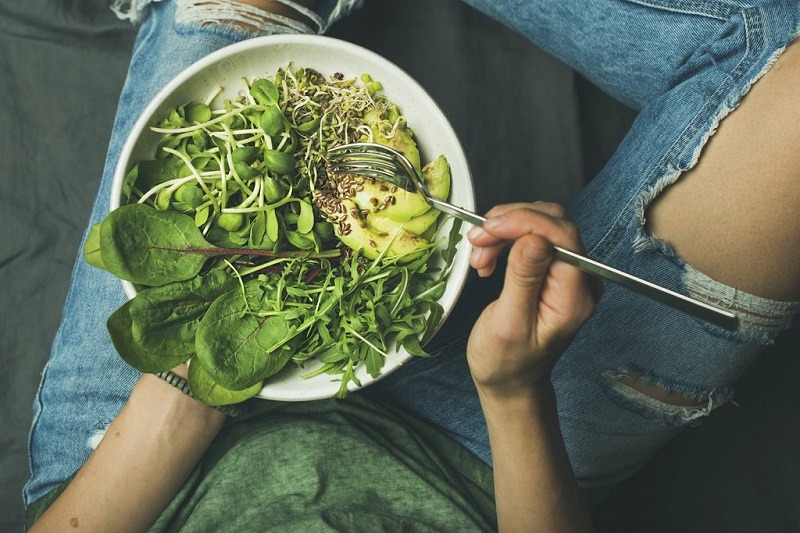
Here Are 9 Easy Ways to Eat a Sustainable Diet for The Planet
There is a good deal of advice out there about how to eat a wholesome diet, and that is fantastic. But perhaps you are also thinking about how to get a sustainable diet without giving up all the dishes which you love. We all know it may be confusing to determine just what a sustainable diet is, so we’ve established a list to get you started!
The best way to consume is a deeply personal option, and one which you finally have to create yourself, however, we believe you will be pleasantly surprised to understand that a sustainable diet is flavorful and simple to follow.
To start, let us clarify what, exactly, a sustainable diet plan is: it is vibrant, flavorful, and great for you. It is full of seasonal, local, and foods that are fermented. And it is kind to the world since it supports sustainable farming techniques and also requires resources to preserve. Everything you eat has a larger effect on the environment than you can understand, and from greening your plate up (literally and otherwise), you can make certain you’re using a positive effect with each meal.
READY TO GET STARTED? CHECK OUT OUR 9 SUSTAINABLE DIET TIPS!
- EAT MORE PLANTS
Fruits and vegetables are packed with essential nutrients which we simply cannot get elsewhere. They also normally have a much lower environmental impact in relation to beef, milk, and processed foods. Exceptions include delicate produce delivered tens of thousands of kilometers, veggies (such as hothouse tomatoes) which are grown in safe states, also resource-intensive foods such as almonds and GMO soy.
- EXPAND YOUR HORIZONS
The way we eat is damaging the world, and 75 percent of the international food supply comes from only 12 5 and plants animal species. The lack of variety in our diets places undue strain on ecosystems AND reduces food safety. So construct colorful plates and revel in a healthier, flavorful, and green meal. And do not be afraid to experiment with particular, locally available foods!
- WASTE NOT, WANT NOT
With 30 percent of the food produced getting wasted, it is apparent that food waste is a significant issue across the world. In reality, if it had been a nation, it could be the 3rd biggest emitter of greenhouse gases (after China and the U.S.). So try to purchase only what you will eat before it goes bad, mulch your bits, and suspend or preserve whatever you won’t use straight away. You could even find our tips on the way to decrease waste.
- MODERATE DAIRY+ MEAT
With international meat consumption increasing by 500 percent between 1992 and 2016, the livestock sector alone creates a staggering 15 percent of the greenhouse gas emissions. Still feel as though you want animal protein. Think about limiting your beef + milk intake to a couple times every week and selecting more sustainable meats (like noodle generated chicken rather than beef).
- EAT LOCAL + IN SEASON
Past getting your very own natural garden, the next best choice is to encourage a local, renewable plantation. Just make sure you pick foods which are in-season, since the expense of keeping them beyond their normal growing seasons may in certain cases be greater than that of transport foods which are in season someplace else. Support local farmers along with the regional community!
- AVOID PROCESSED FOODS
Besides being bad for your health, processed foods expect a good deal of resources to split down ingredients and extract most nutrients on the way. Even brown rice, that is inarguably better than white rice, sucks up a great deal of water through creation. Get in the habit of purchasing foods in their whole, unprocessed form, such as buckwheat, quinoa, wild rice, unrefined barley, and wheat berries.
- CHOOSE SUSTAINABLY SOURCED SEAFOOD
Seafood is a superb addition to a wholesome diet, but higher demand and bad management have contributed to overfishing of species such as North Sea cod and wild Atlantic salmon. Get daring and try a yummy, sustainable choice like barramundi, wild-caught sardines, and farmed shellfish.
- GIVE PLANT PROTEINS A CHANCE
Plant-based proteins such as beans, legumes, and a few grains, are not as resource-intensive than animal proteins such as beef and poultry. They also have a tendency to be heart-healthy and easier to digest. Next time you create tacos or shepherd’s pie, consider subbing lentils to your beef for a delicious, filling, and sustainable alternate!
- CHOOSE SUSTAINABLY PACKAGED FOODS
Appropriate food packaging, particularly of meats and fish, is very important to food security. But wherever possible, attempt to decrease the total amount of packed foods you purchase. Think bulk fruits . separately packed ones, bring reusable shopping and bulk bags into the shop, and discover products using sustainable packaging materials.
We expect this list has gotten you excited about greening your daily diet!